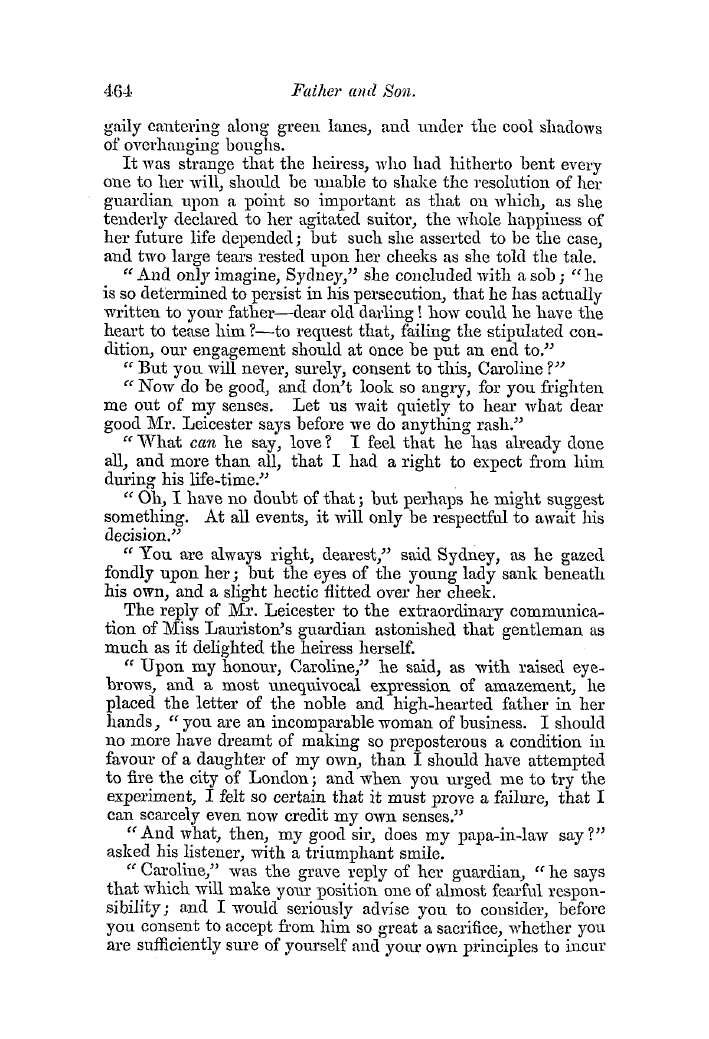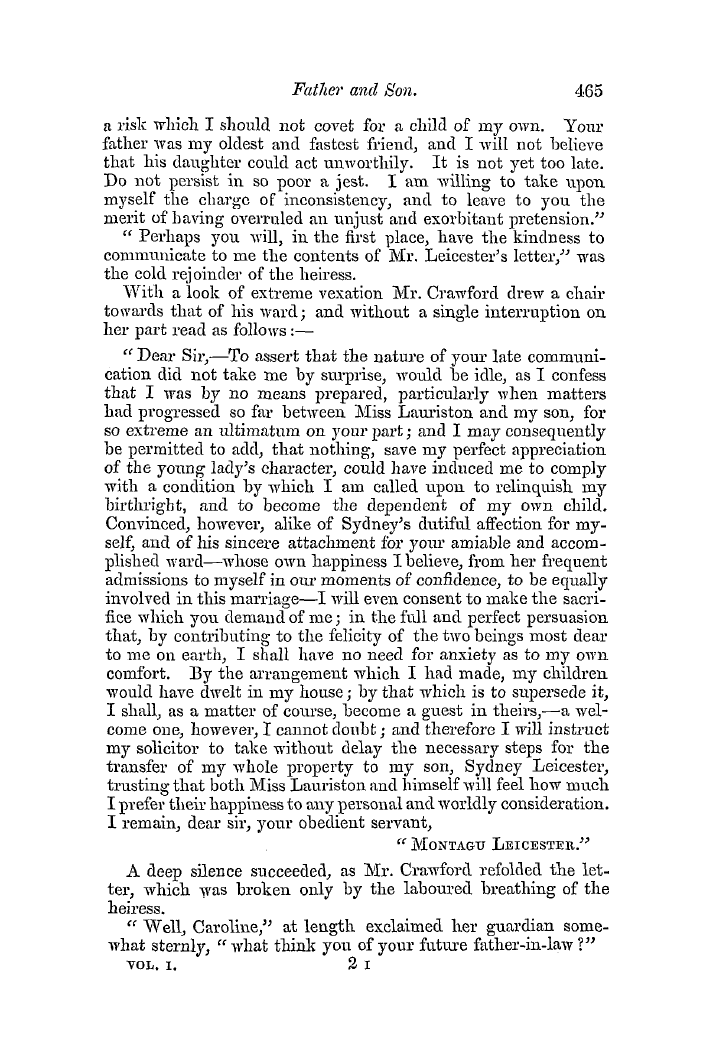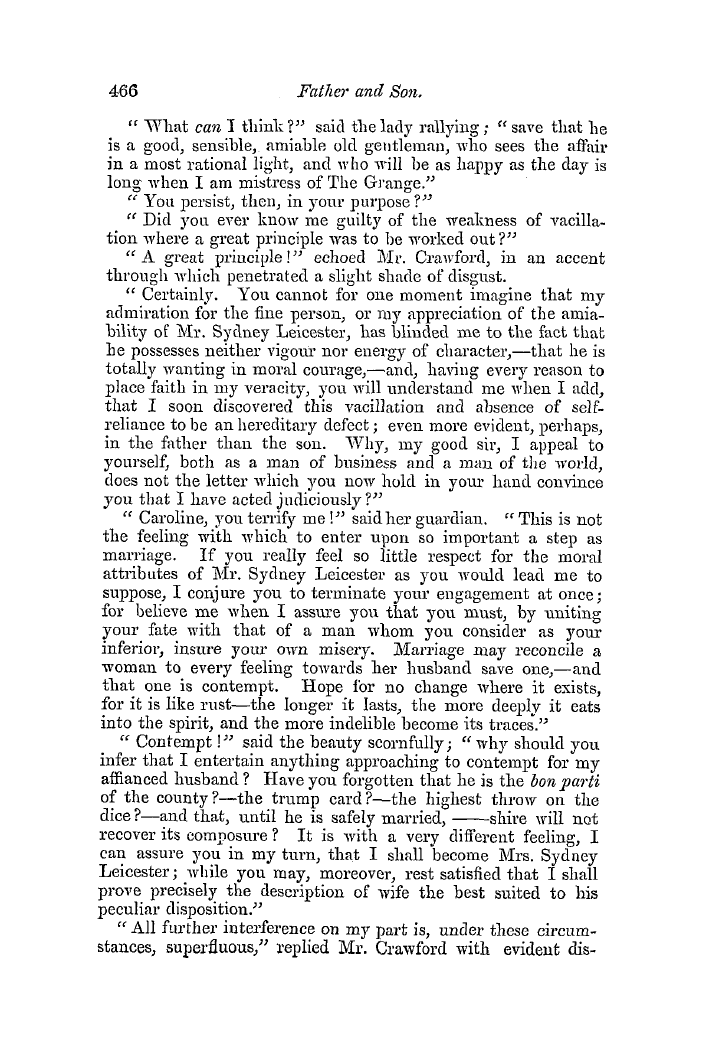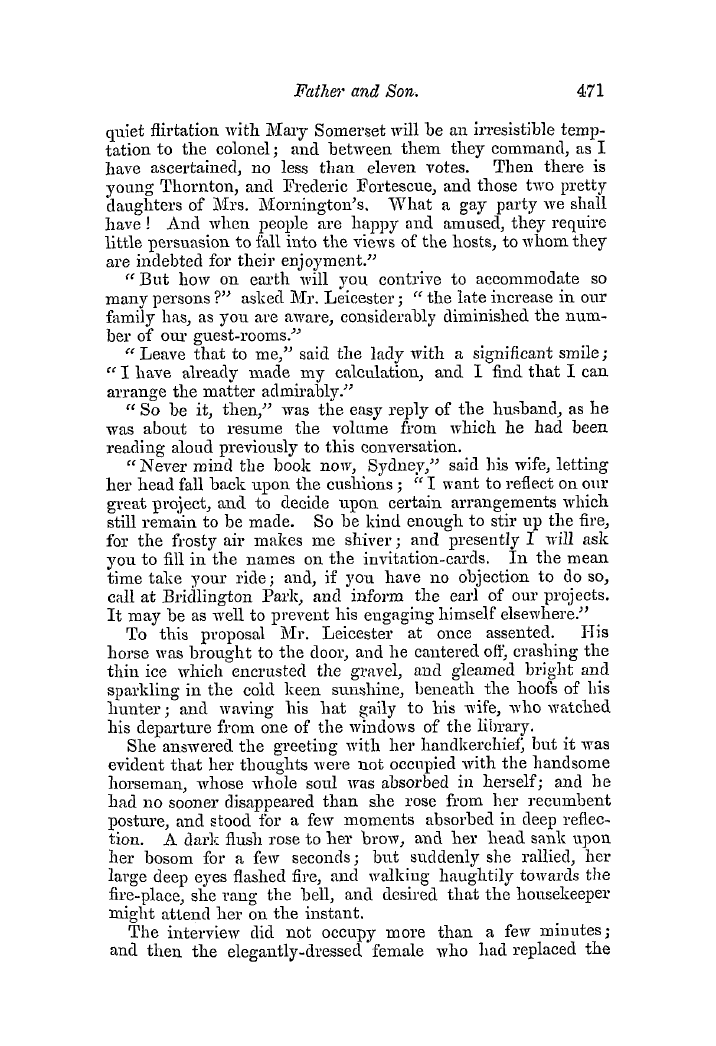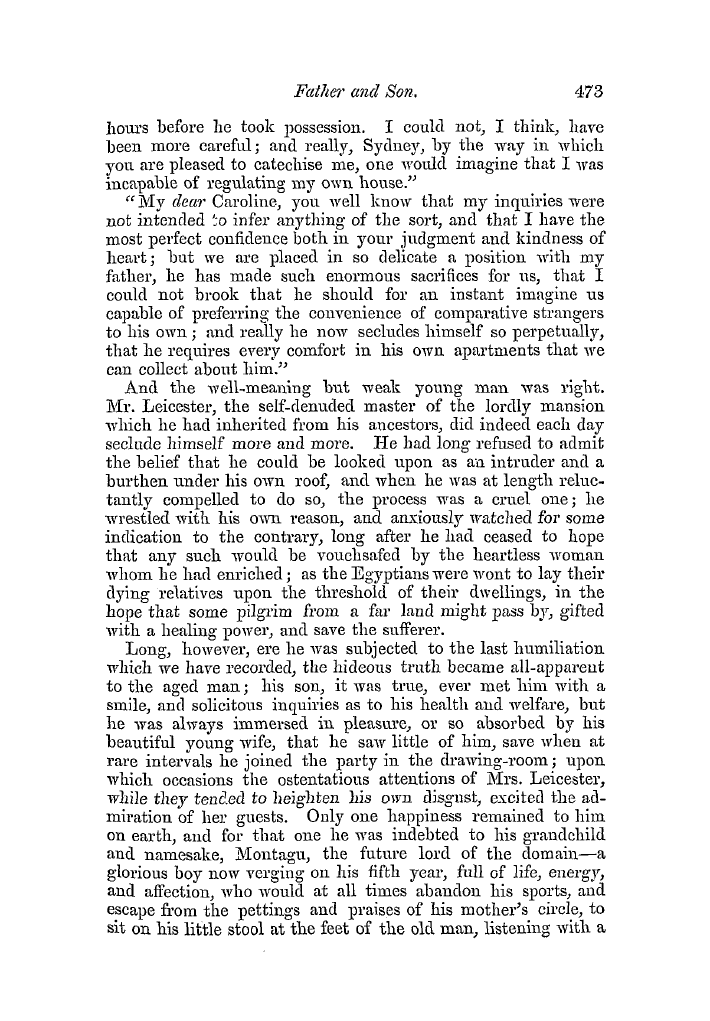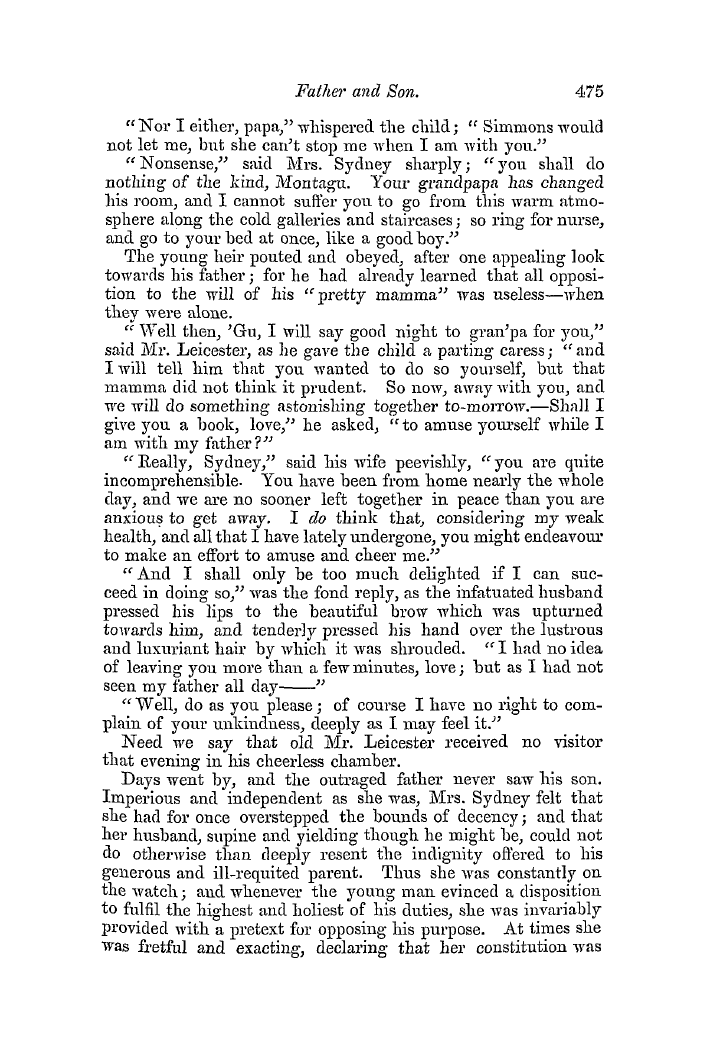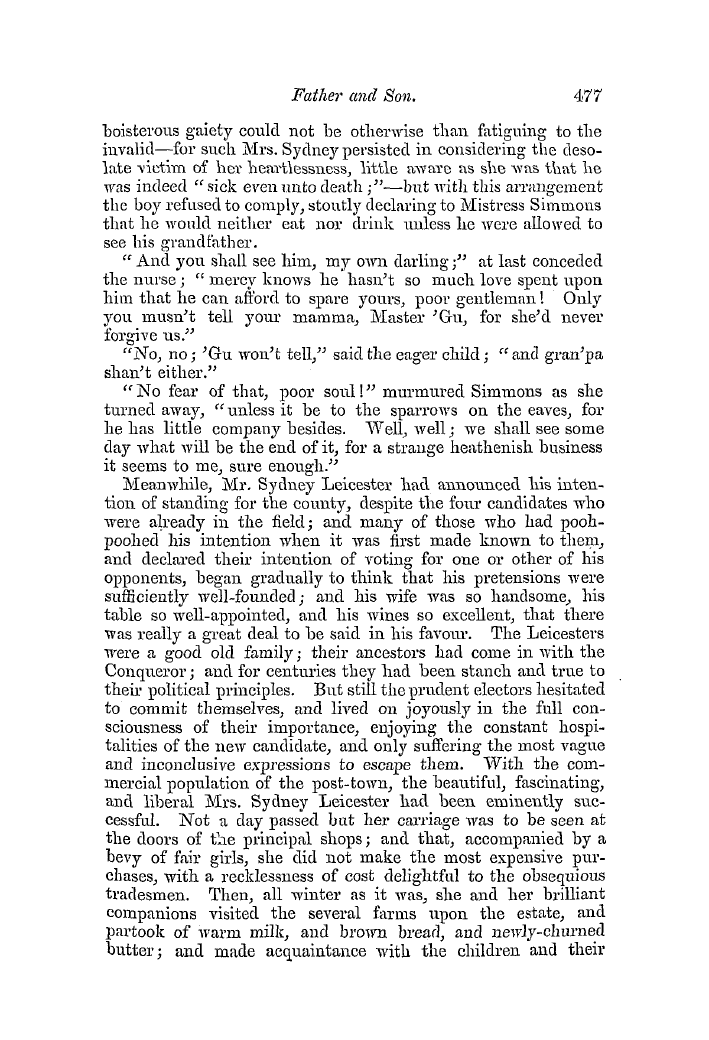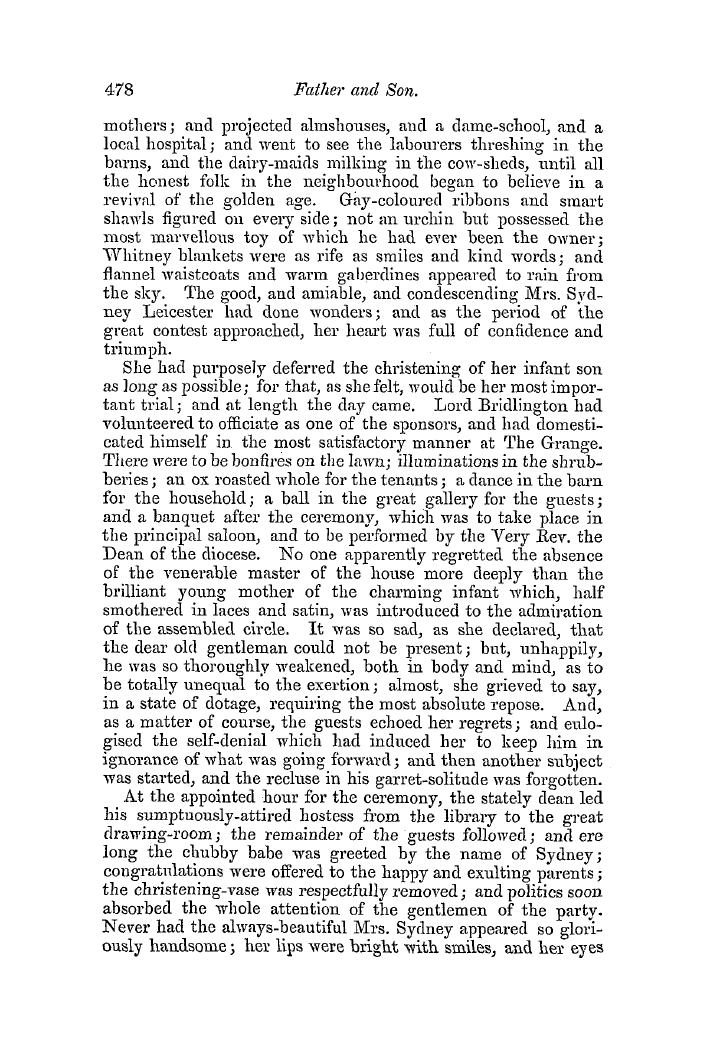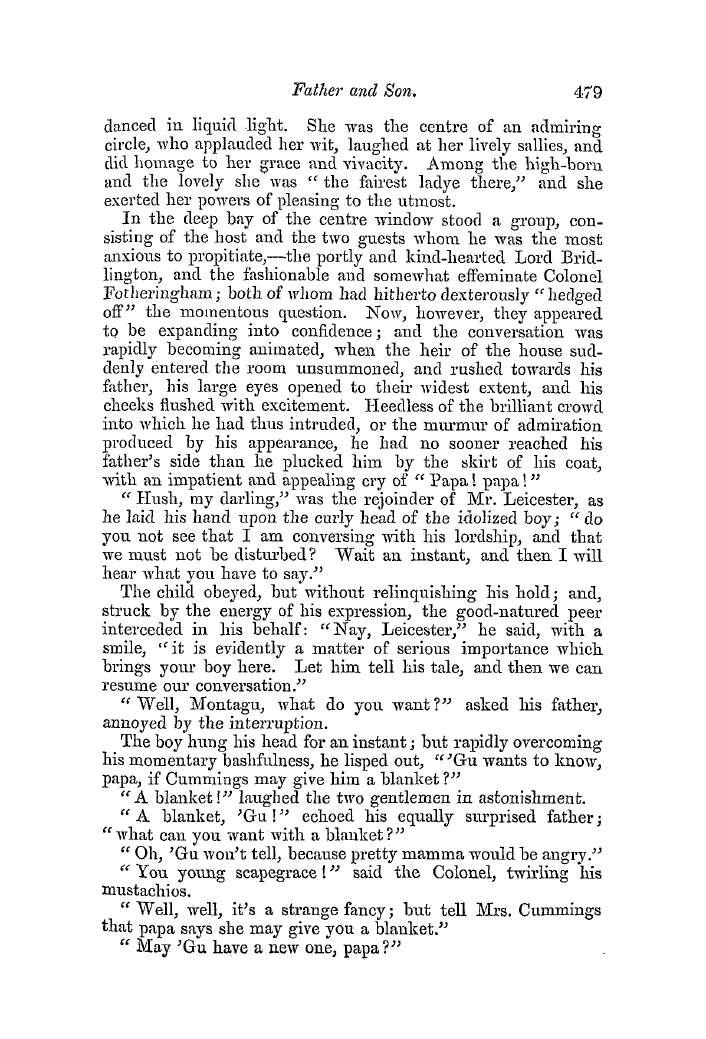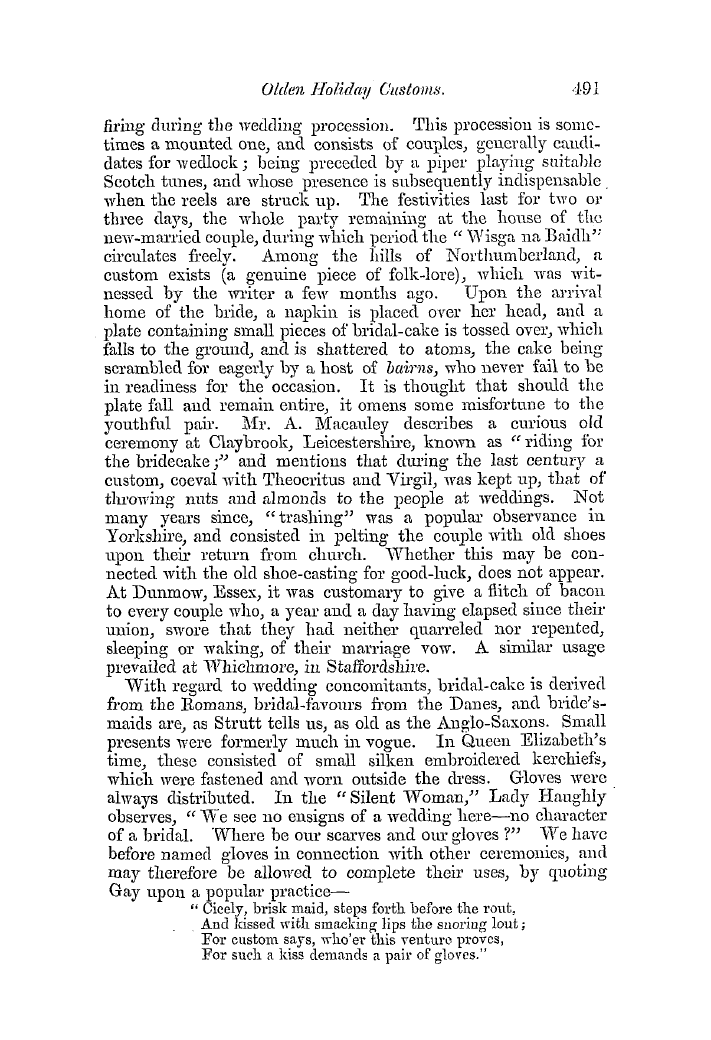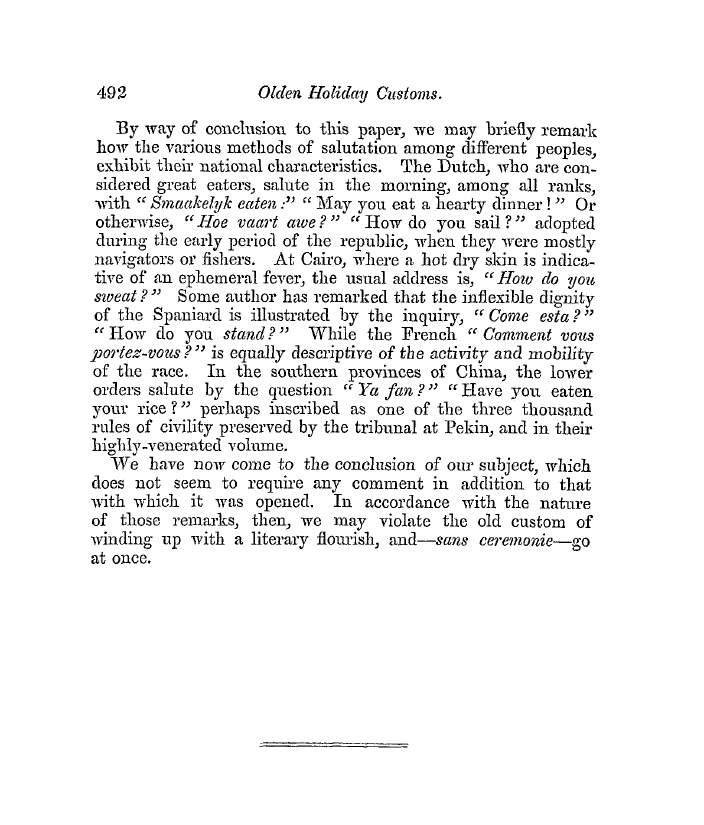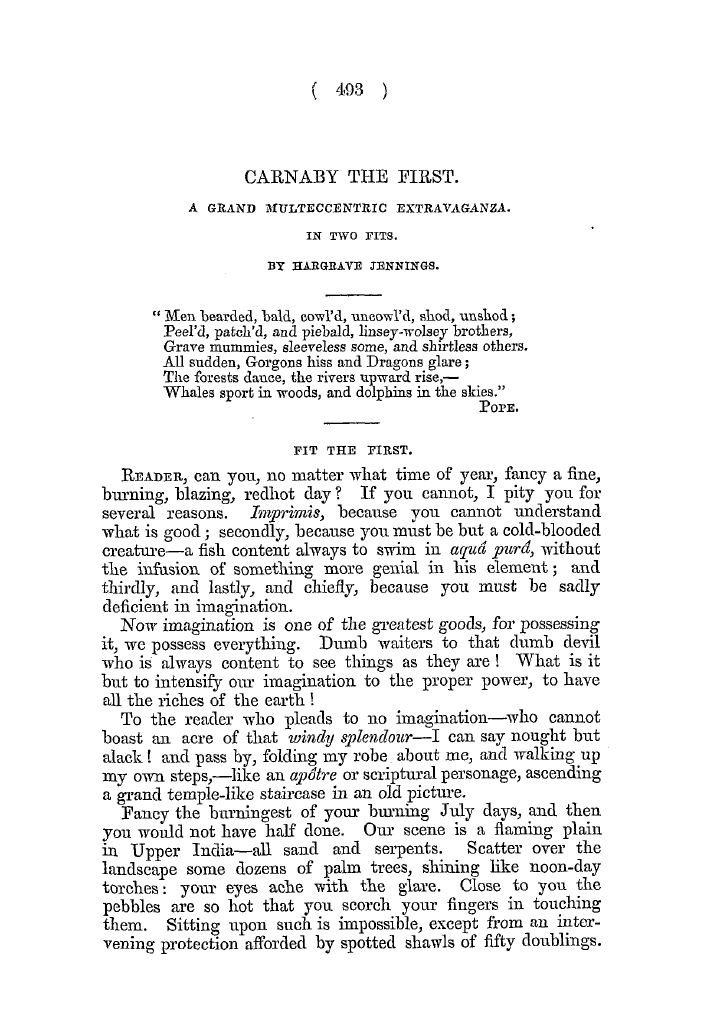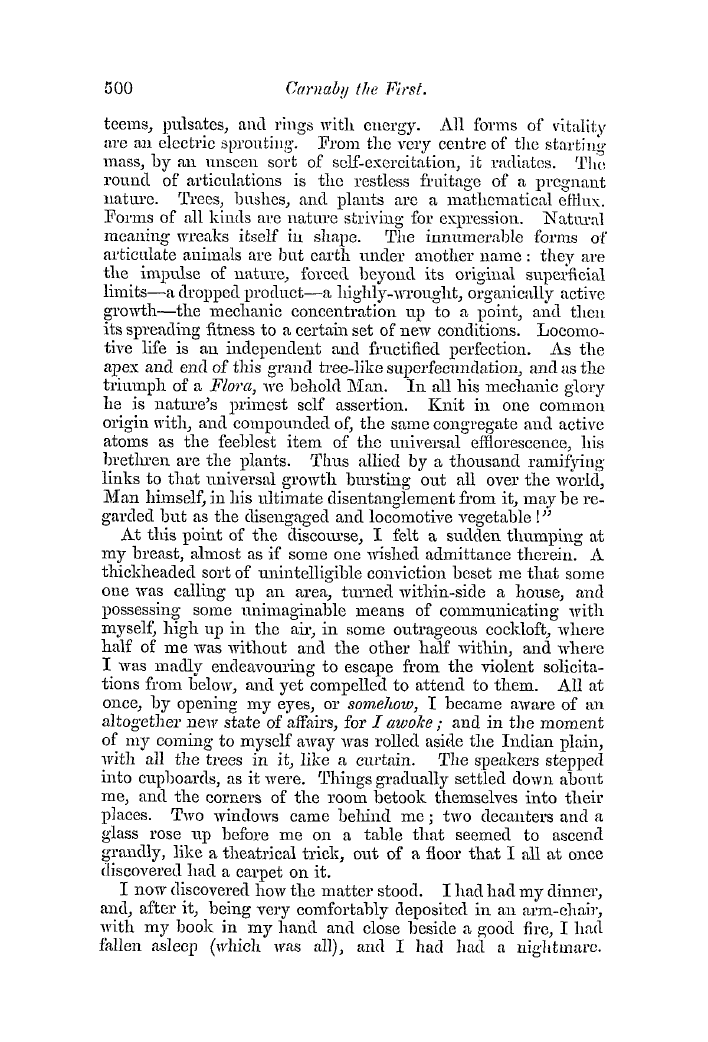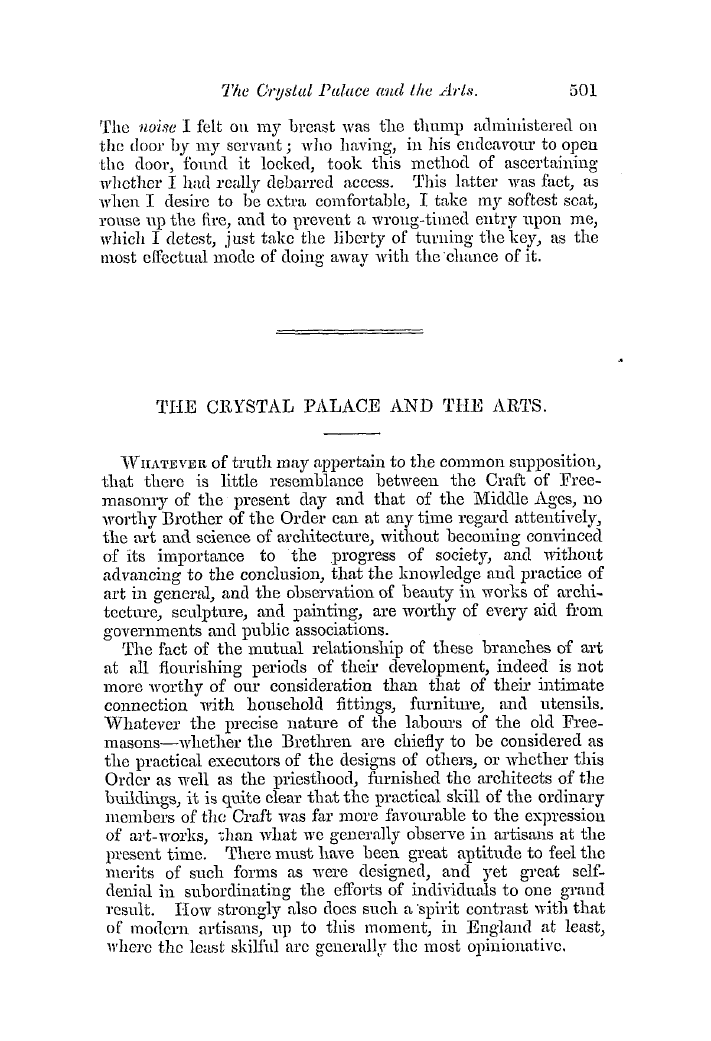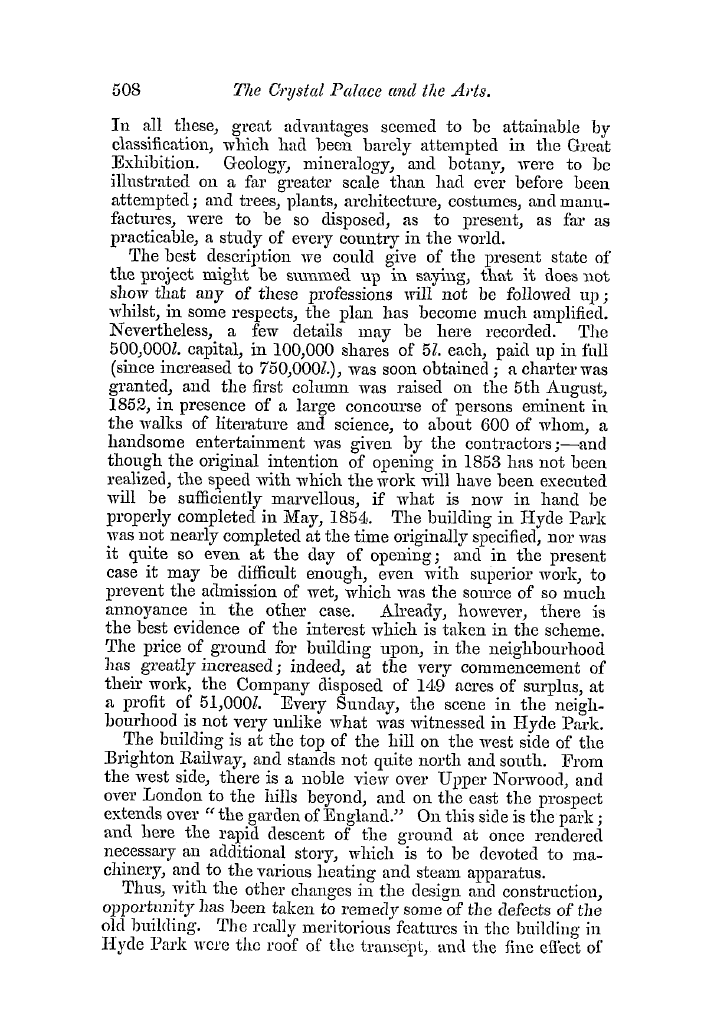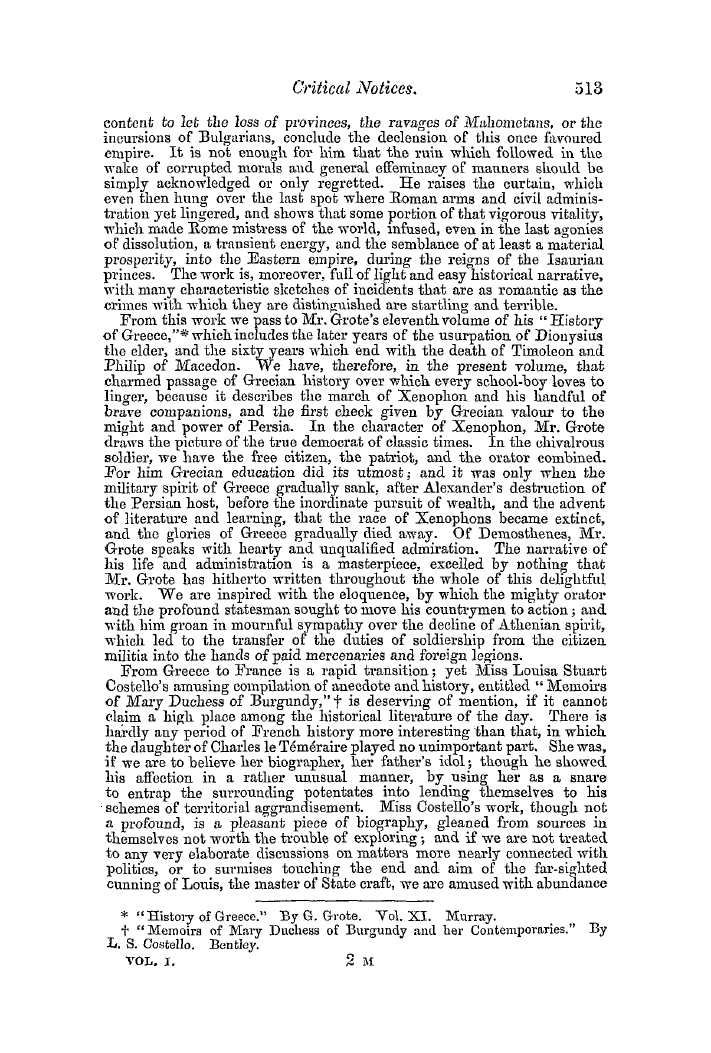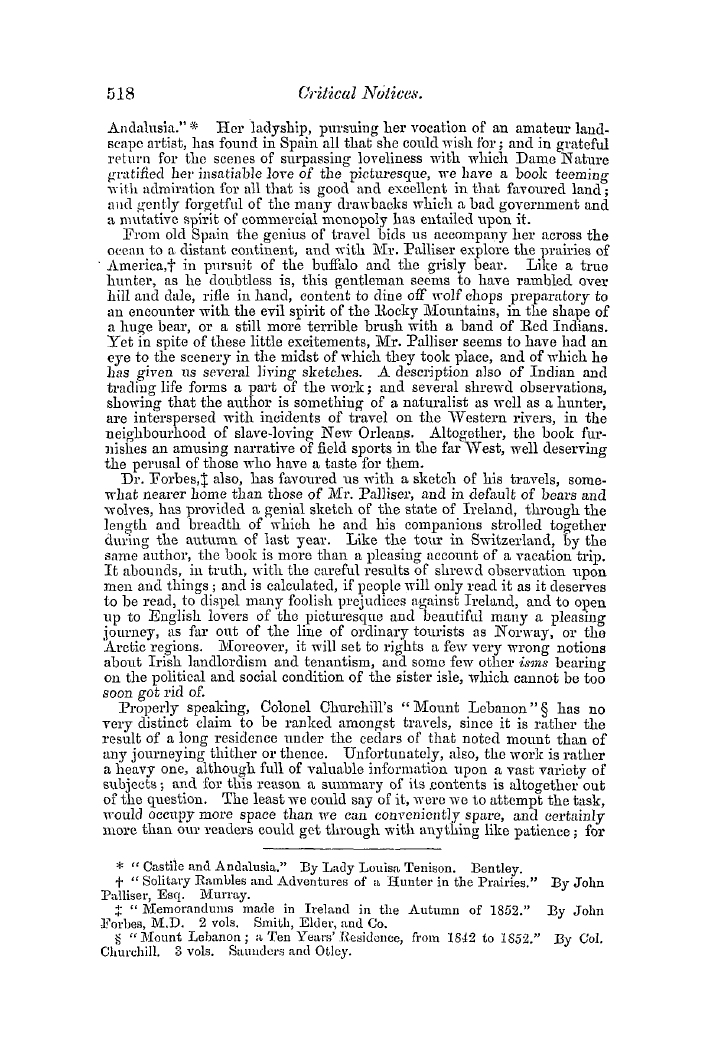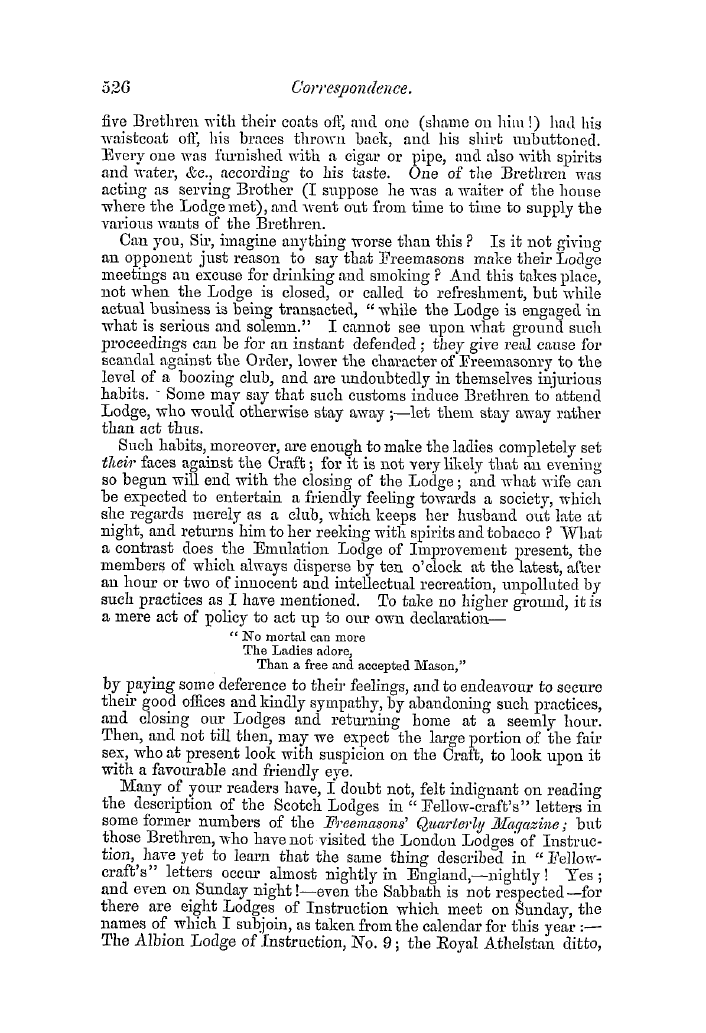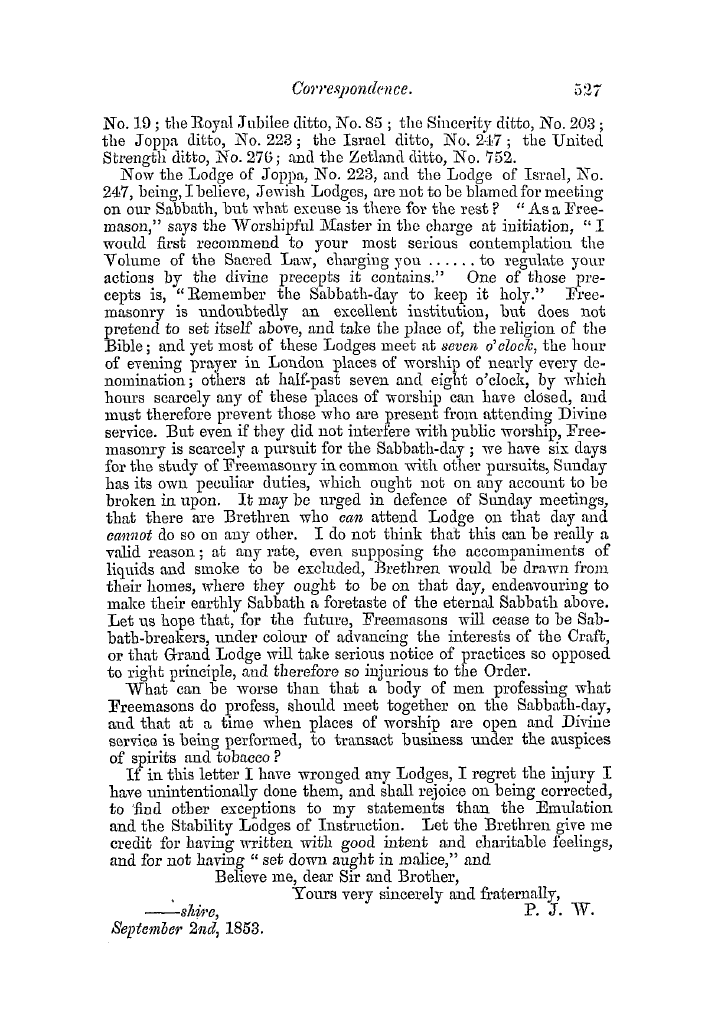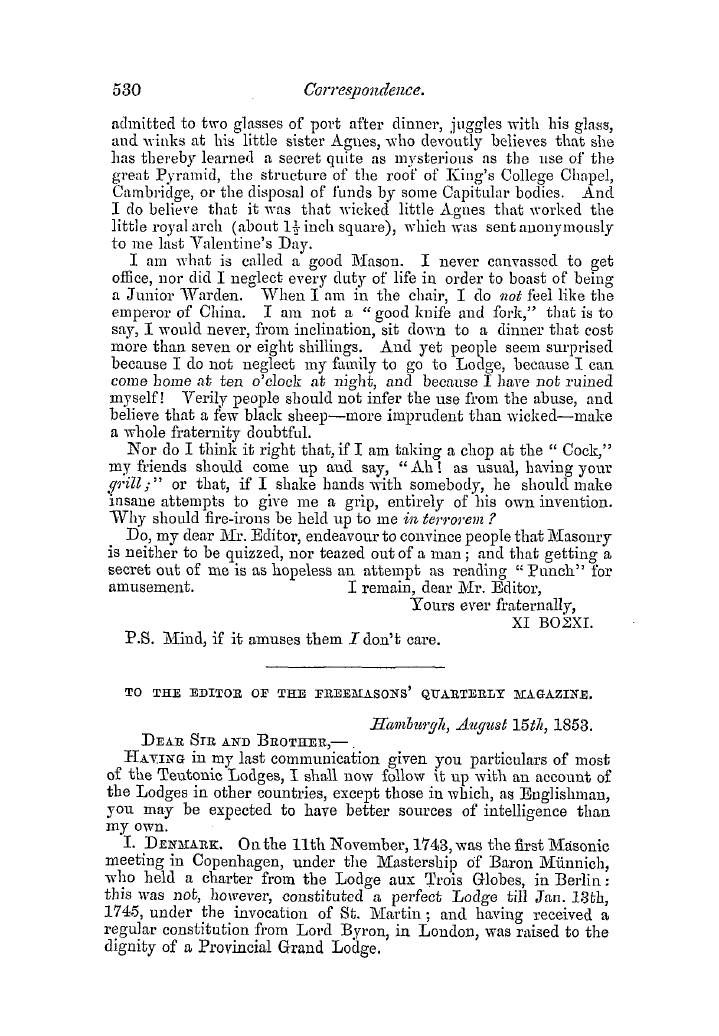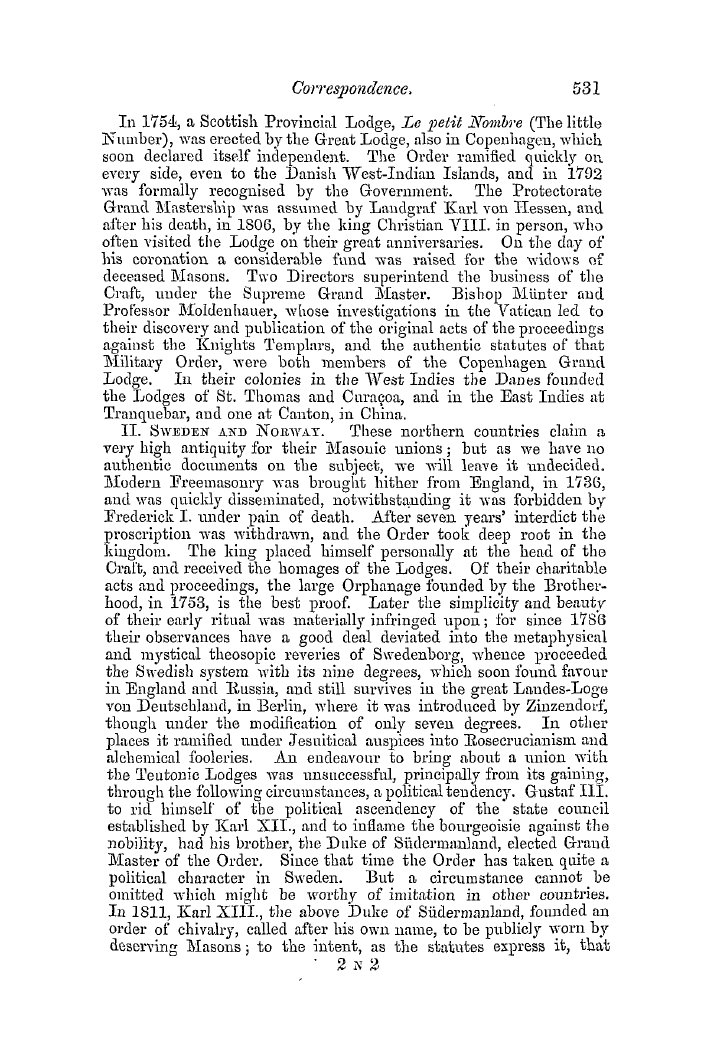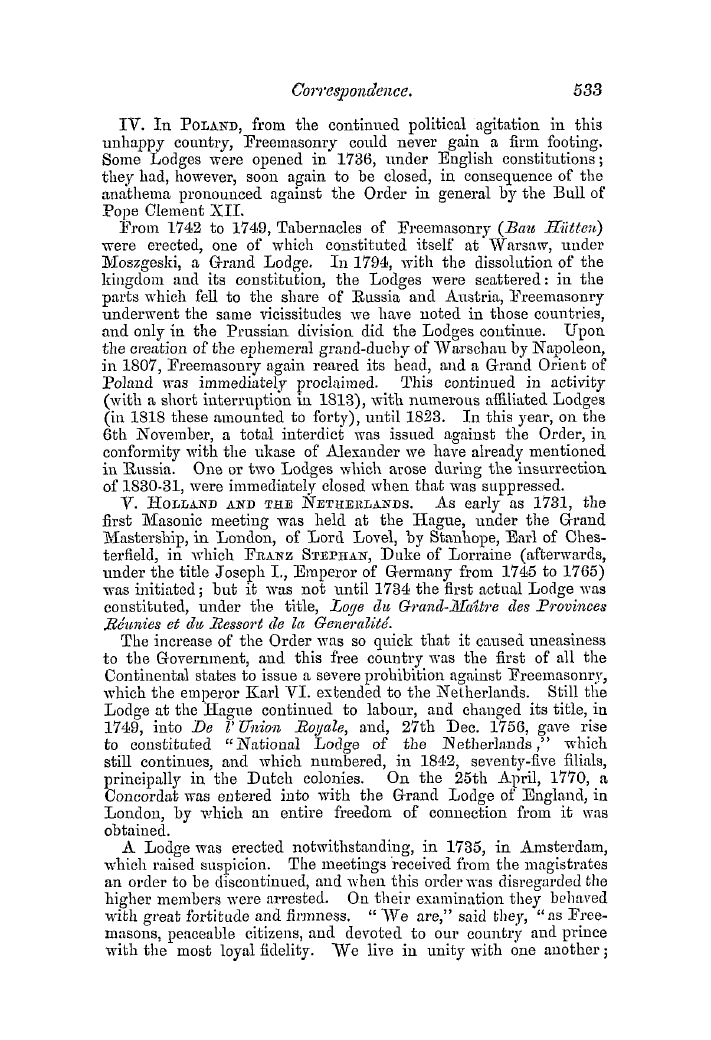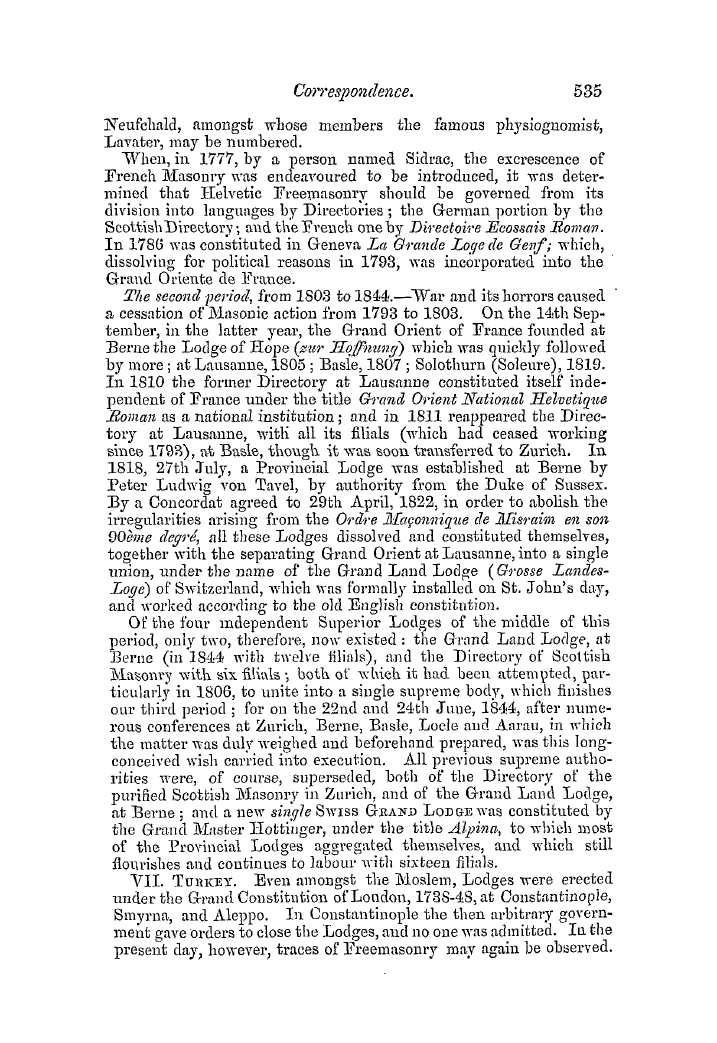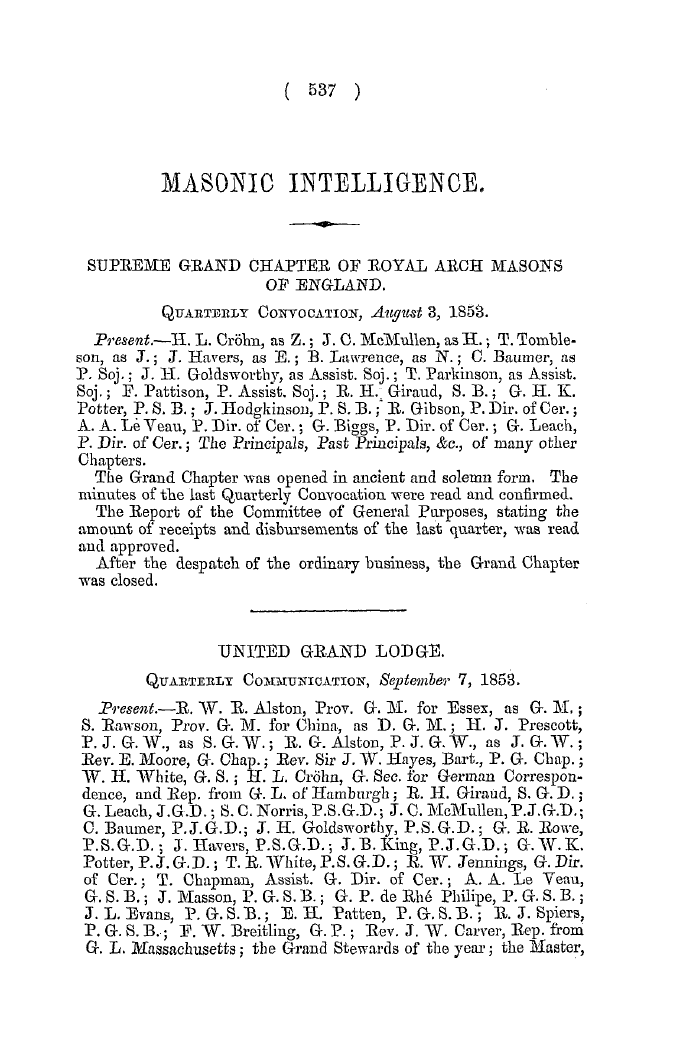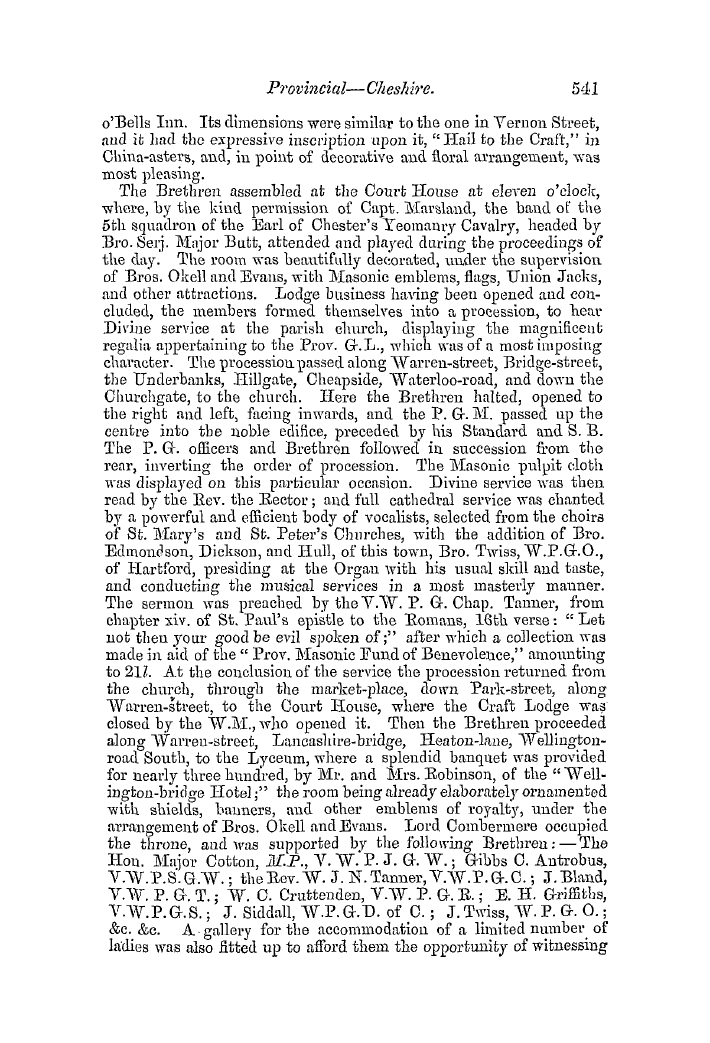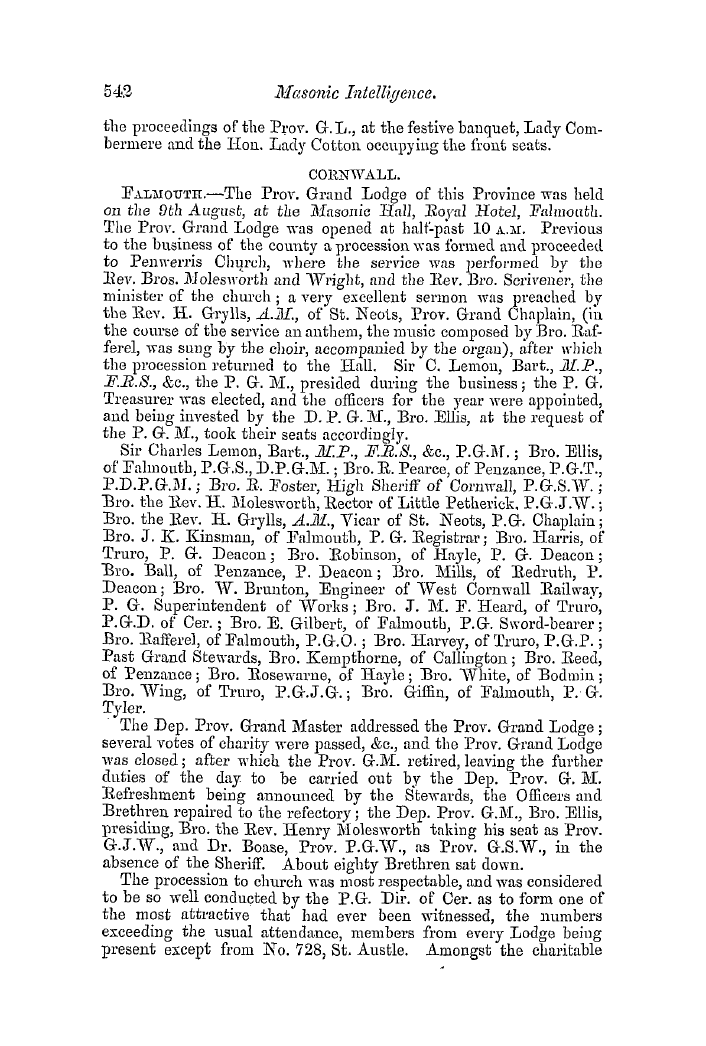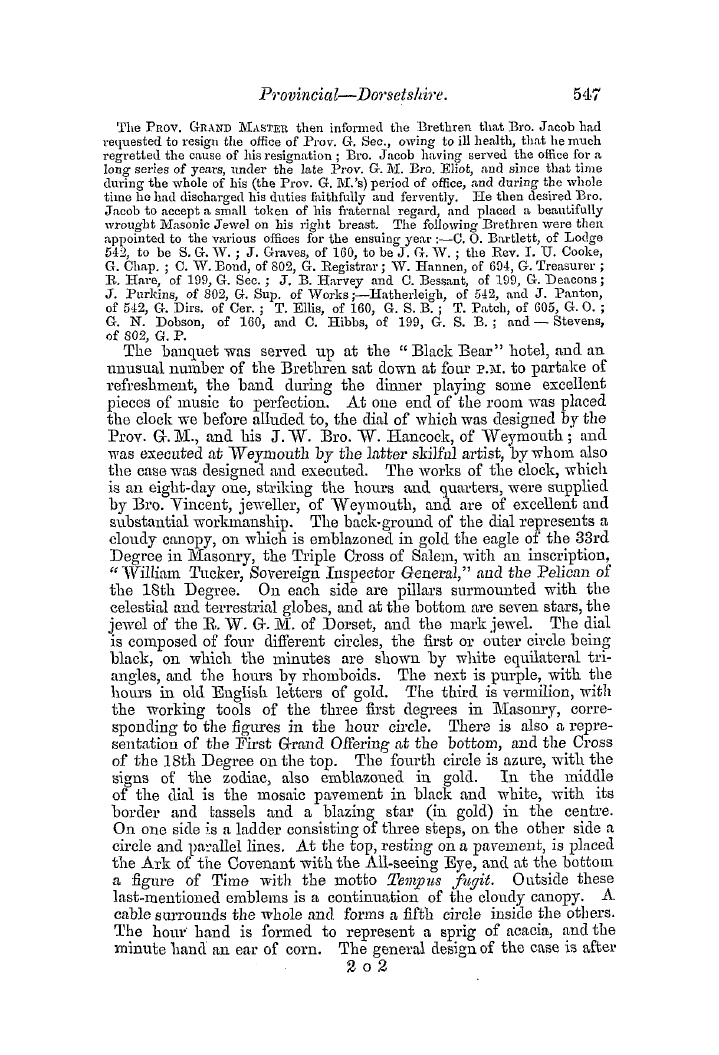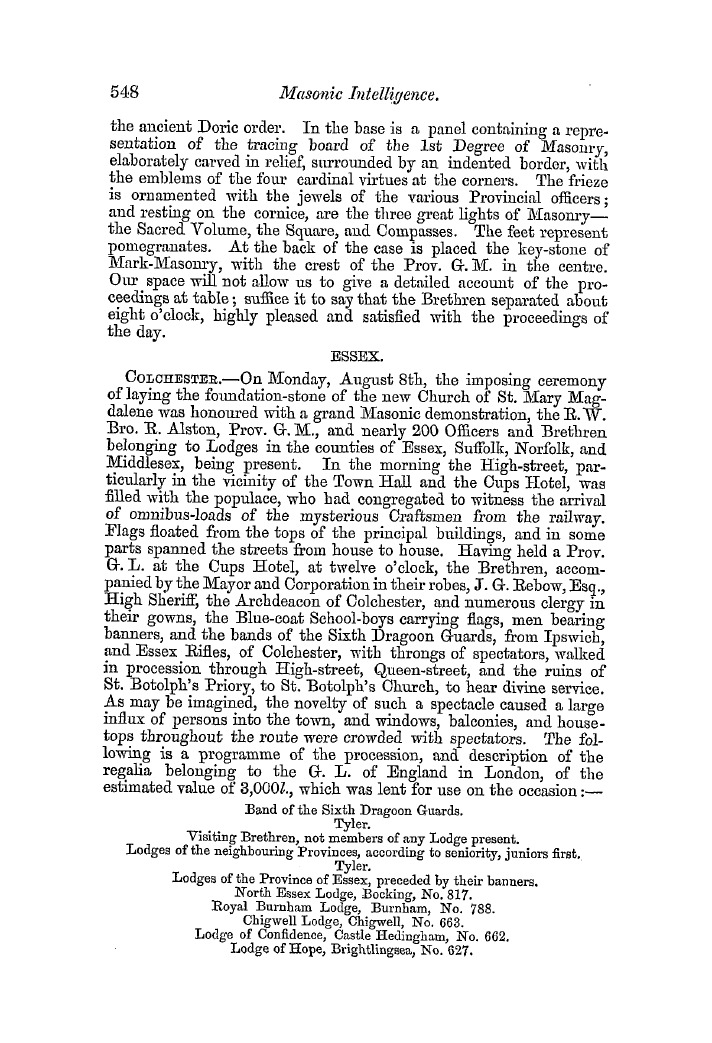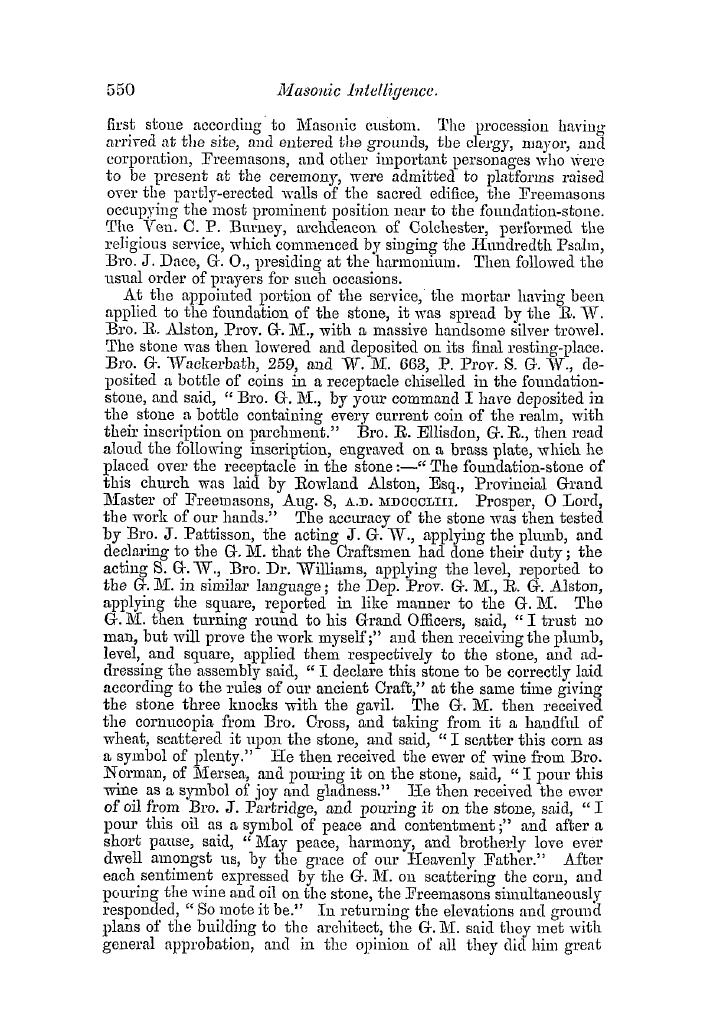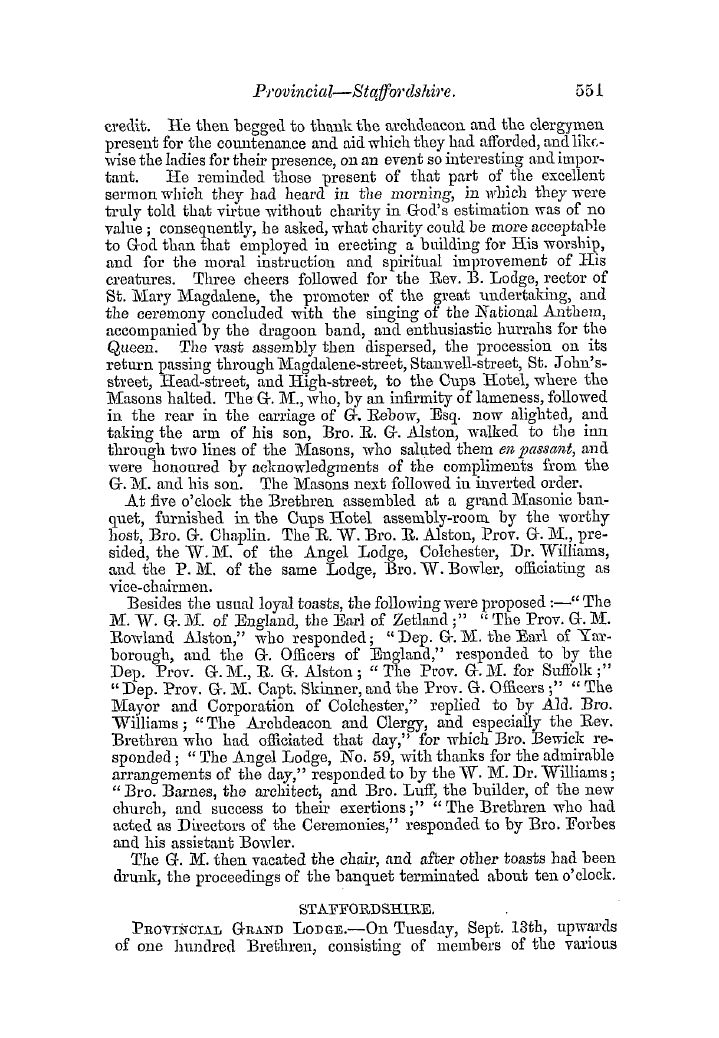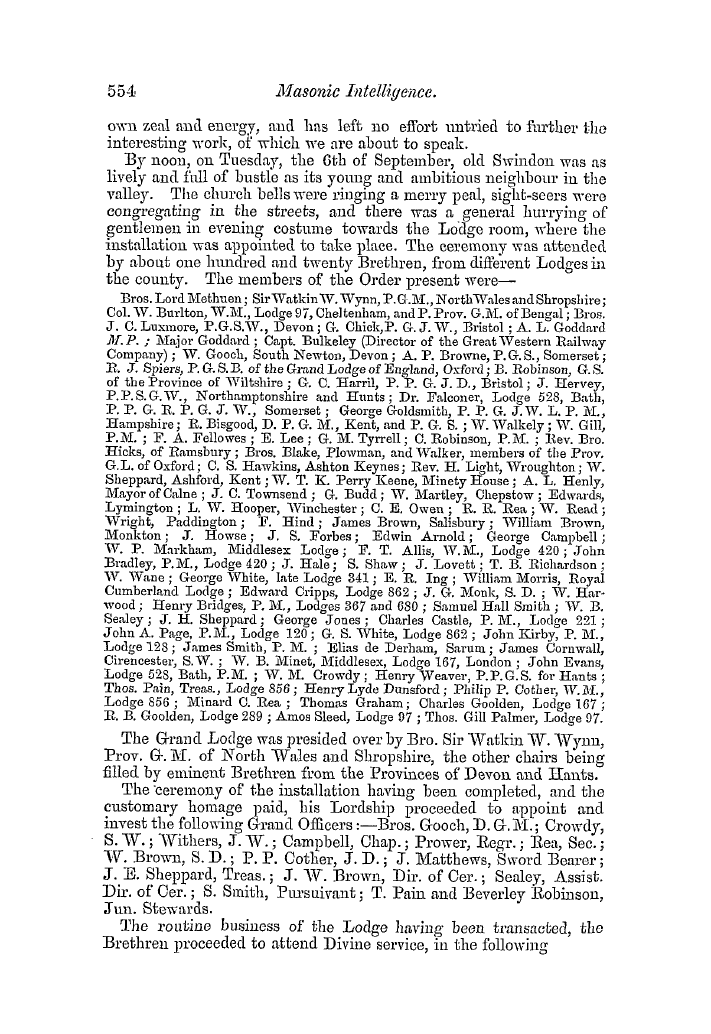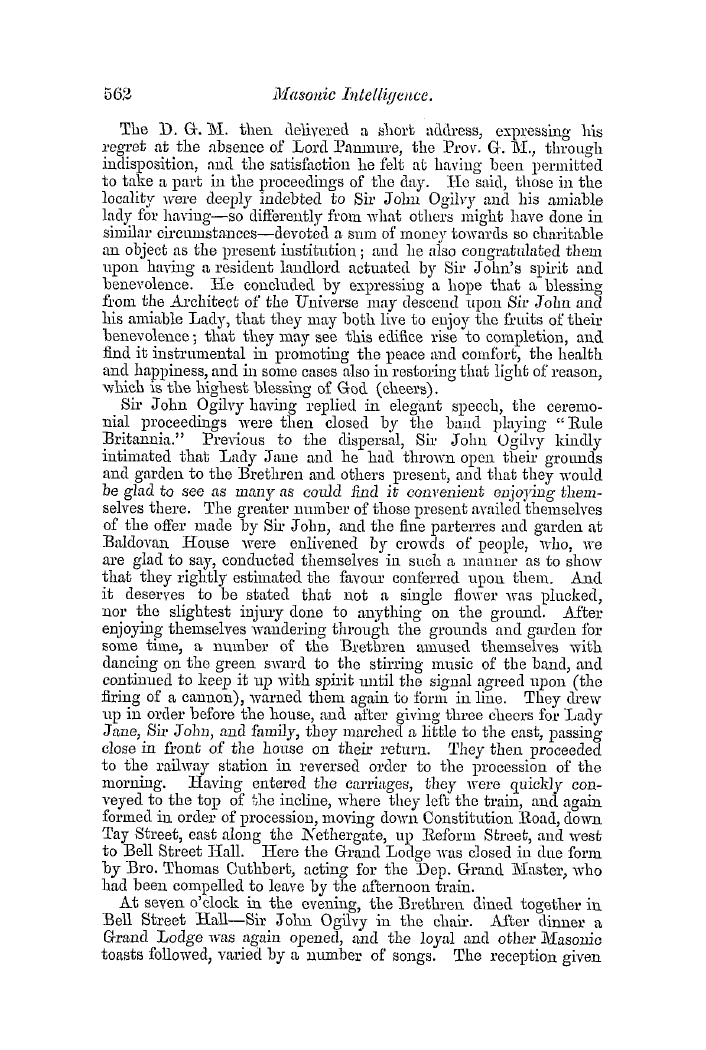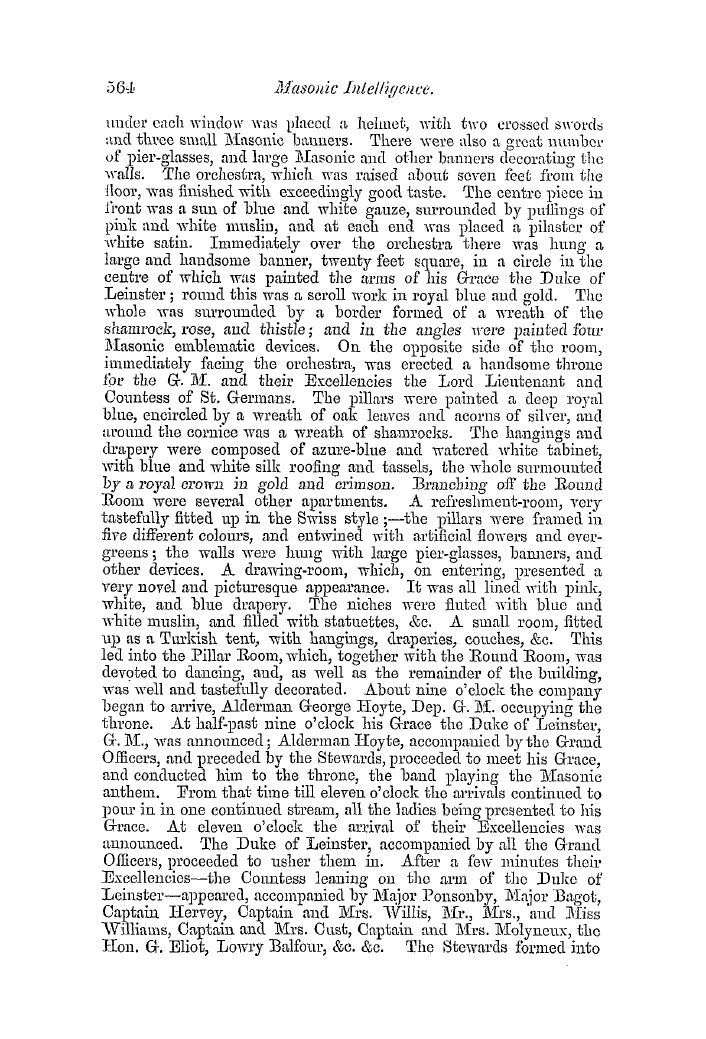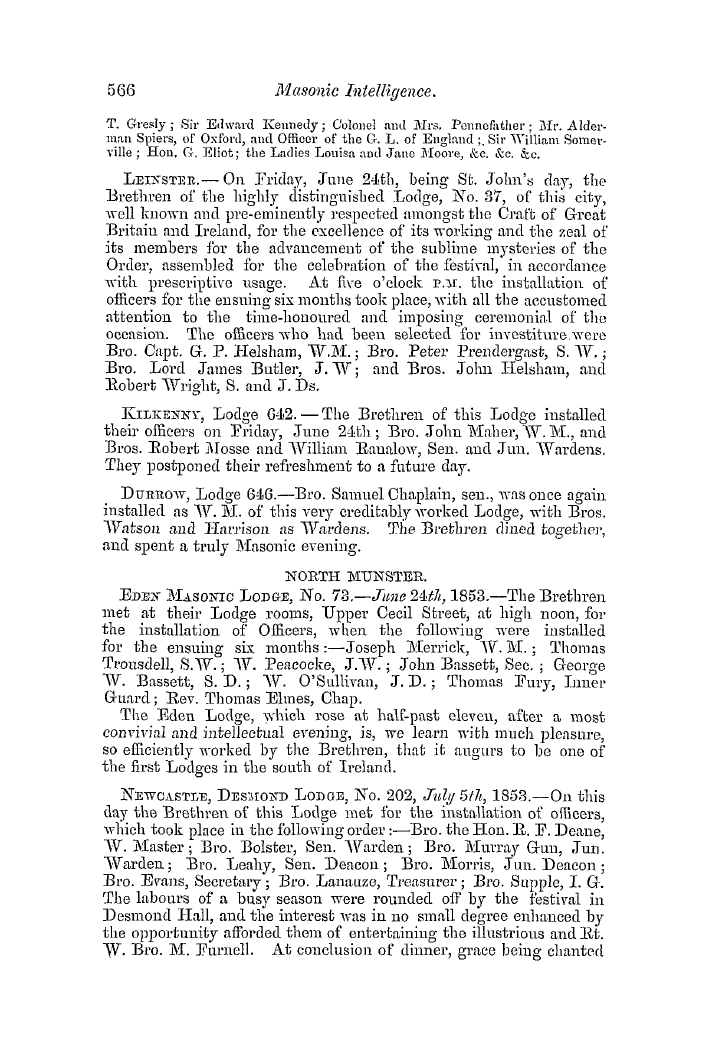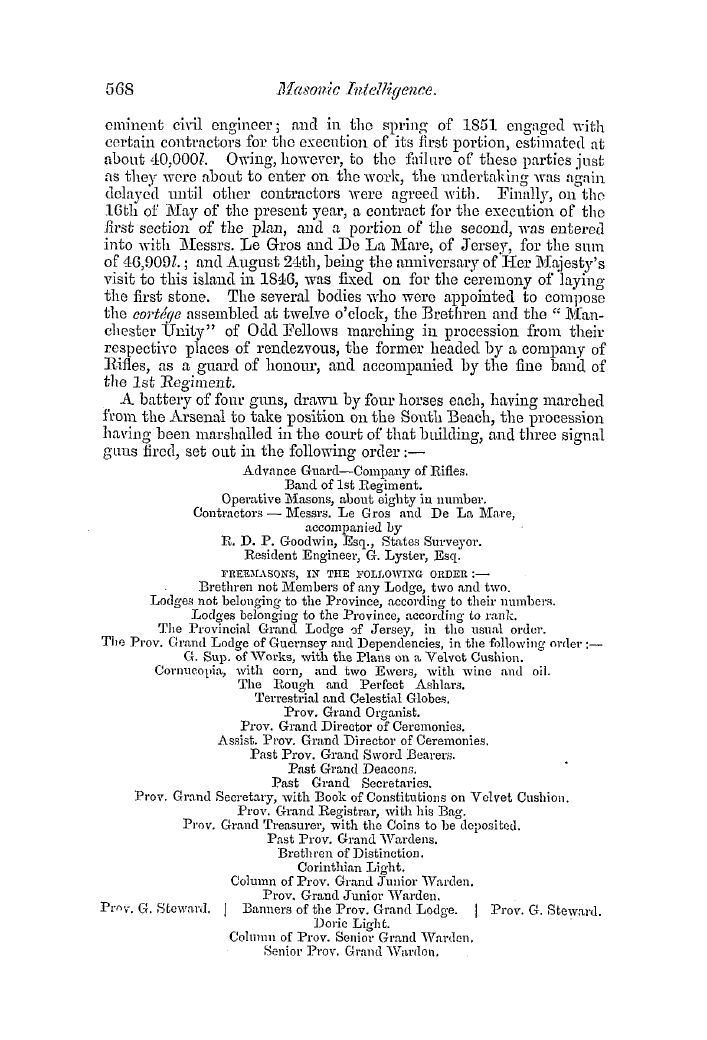-
Articles/Ads
Article ON THE LEGEND OF THE HOLY OR SAN GRAAL; ← Page 4 of 26 →
Note: This text has been automatically extracted via Optical Character Recognition (OCR) software.
On The Legend Of The Holy Or San Graal;
the right of reclaiming from his Sardinian Majesty whatever may still remain of this inestimable relic . It is curious , however , that in our indigenous annals we find no name given to the dish during' its British sojourn , and it will only be by disinterring a very neglected passage from the monk William of Malmesburyand a comparison with foreign facts and authorities
, , that we at all trace its existence amongst us . Before , however , proceeding further , it will be necessary to give the differing forms under which the name is found . Garalis , in an Anglo-Saxon glossary , is explained by acetabulum , which would mean any vessel for holding vinegar . Gradates and Graaltz—scutella lata propter contentum gratumid est
, ordinem multiplicem pretiosarum dapium . Graal , Roquefort { Diet . Provenc . with many unimportant varieties ) , vase a , boire , grand plat . Grasal , at Marseilles , a soup-tureen . All these agree in the common meaning of a dish . In Bennet College , Cambridge , is a poem on the subject , of forty thousand verses , hitherto unpublished , in which the name is given Sank Riial ,
and Seynt Graal , and in Caxton ' s " Morte d'Arthur , " we have the more usual Sangreal . Some have believed the name but a corruption , of sanguis regalis , giving countenance to the legend of the holy blood . There are some other suppositions which we shall pass over to come to the most ridiculous of all , that of Joseph von Hammer ( and now Baron Purgstall ) , in his
" Mysterium Baphometis Revelatum . " Having found that in Arabic Gar signifies a hole , and having fully made up his mind that the curious offertory-dishes , which have caused much discussion on the Continent , and are not unknown in England , from their interesting and enigmatical inscriptions , were Templar utensils ; and reading the five-times repeated letters on many
as , Have ait Garal ; he comes , by I know not what species of reasoning , to the conviction , that they and the Scriptural figures at their bottoms are most damning proofs of Templar atrocity . As these dishes have caused inquiry in England ; and as a specimen of the estimation Von Hammer's theory is held in by his countrymen , the following translation of a passage , on both subjects , from Justizrath Schulz ( pseudo-named San Marte ) , on the Graal may not be out of place .
" J . von Hammer ' s deduction falls with his documents , the ' Offertory Dishes , ' which are nothing less than Templar . Their characters are , as every one might convince himself , from the engraving in the ' Curiositaten / neither majuscles nor minu 3 cles , nor indeed the alphabet of any language whatsoever ; these scrawls are but mere purposely or ignorantly formed contortions . Since so much noise was made concerning these dishes , numerous others have turned np ( in England especially ); and on the brokers' stalls at Ntimberg and Augsburg , numbers may still be met
Note: This text has been automatically extracted via Optical Character Recognition (OCR) software.
On The Legend Of The Holy Or San Graal;
the right of reclaiming from his Sardinian Majesty whatever may still remain of this inestimable relic . It is curious , however , that in our indigenous annals we find no name given to the dish during' its British sojourn , and it will only be by disinterring a very neglected passage from the monk William of Malmesburyand a comparison with foreign facts and authorities
, , that we at all trace its existence amongst us . Before , however , proceeding further , it will be necessary to give the differing forms under which the name is found . Garalis , in an Anglo-Saxon glossary , is explained by acetabulum , which would mean any vessel for holding vinegar . Gradates and Graaltz—scutella lata propter contentum gratumid est
, ordinem multiplicem pretiosarum dapium . Graal , Roquefort { Diet . Provenc . with many unimportant varieties ) , vase a , boire , grand plat . Grasal , at Marseilles , a soup-tureen . All these agree in the common meaning of a dish . In Bennet College , Cambridge , is a poem on the subject , of forty thousand verses , hitherto unpublished , in which the name is given Sank Riial ,
and Seynt Graal , and in Caxton ' s " Morte d'Arthur , " we have the more usual Sangreal . Some have believed the name but a corruption , of sanguis regalis , giving countenance to the legend of the holy blood . There are some other suppositions which we shall pass over to come to the most ridiculous of all , that of Joseph von Hammer ( and now Baron Purgstall ) , in his
" Mysterium Baphometis Revelatum . " Having found that in Arabic Gar signifies a hole , and having fully made up his mind that the curious offertory-dishes , which have caused much discussion on the Continent , and are not unknown in England , from their interesting and enigmatical inscriptions , were Templar utensils ; and reading the five-times repeated letters on many
as , Have ait Garal ; he comes , by I know not what species of reasoning , to the conviction , that they and the Scriptural figures at their bottoms are most damning proofs of Templar atrocity . As these dishes have caused inquiry in England ; and as a specimen of the estimation Von Hammer's theory is held in by his countrymen , the following translation of a passage , on both subjects , from Justizrath Schulz ( pseudo-named San Marte ) , on the Graal may not be out of place .
" J . von Hammer ' s deduction falls with his documents , the ' Offertory Dishes , ' which are nothing less than Templar . Their characters are , as every one might convince himself , from the engraving in the ' Curiositaten / neither majuscles nor minu 3 cles , nor indeed the alphabet of any language whatsoever ; these scrawls are but mere purposely or ignorantly formed contortions . Since so much noise was made concerning these dishes , numerous others have turned np ( in England especially ); and on the brokers' stalls at Ntimberg and Augsburg , numbers may still be met































































